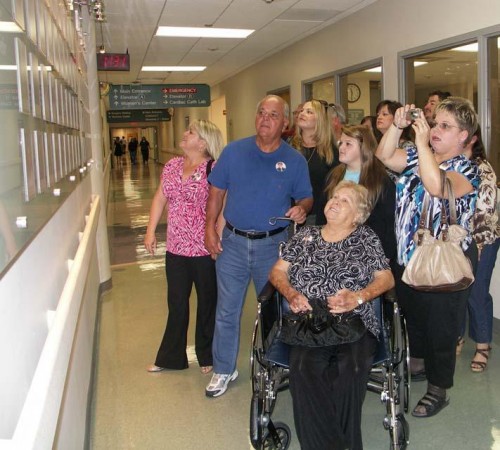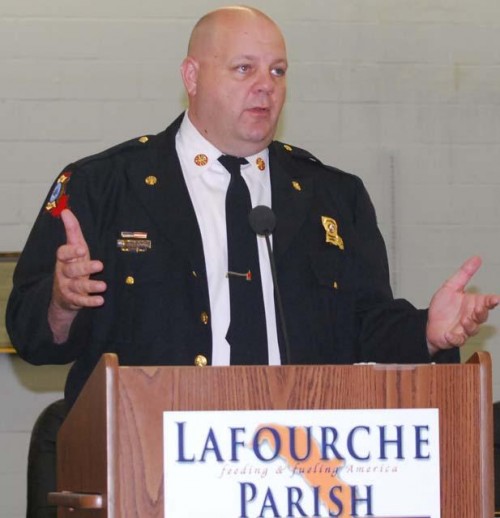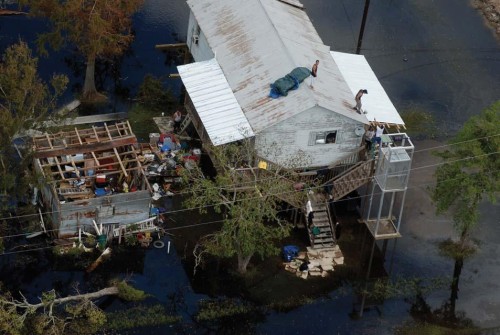
TGMC dedicates pictured wall of donors
April 19, 2011
Lafourche permit office tries to stymie
April 21, 2011The giant earthen wall is one thing, but we might never truly know if and when it will fully be completed.
While that battle continues to be fought in legislation, that leaves Tri-parish natives wondering what to do for today, in case a worst-case scenario knocks on our doors.
For many, that means the next most viable option is buying flood insurance through the National Flood Insurance Program.
But for anyone who has ever attempted to make such a move in our area, it might not be as easy as it looks, because several towns and communities in our area are deemed “high-risk” because of our lack of storm protection.
Paddy Buratto with the FEMA Louisiana Recovery Office sat down with the Tri-Parish Times this week and answered some common questions that many have about the flood insurance program and how it impacts our area.
T-PT: Obviously, it’s sort of a tale of two worlds, because we have some very low-lying areas, but also some higher elevation areas within our Tri-parishes. With that said, how do you guys set standards and policies for each different area, knowing some are safer areas than others?
Paddy Buratto: Flood insurance policies are rated using a variety of factors. First the building or contents to be insured must be in a community that participates in the National Flood Insurance Program (NFIP). Then determine the correct flood zone, location of the content in the building, date of construction, occupancy (residential/non-residential), and building type (basement, how many stories, split level or mobile home on a foundation, elevation of the lowest floor compared to the Base Flood Elevation (BFE).
T-PT: With that said, what are some of the common notable landmarks, floodgates, levee systems inside of our area that hold weight when you make your evaluations?
PB: In Lafourche Parish, according to the now effective Flood Insurance Rate Maps (FIRM), the South Lafourche Levee receives some credit on the map as having some protection. The protection is in the form of different flood zones. For example, without the levee some areas may be in a VE zone, with the credit of the levee the same areas are now zoned in an AE zone, and the flood insurance rates are different between these flood zones. The flood insurance rates for VE zone are higher than an AE zone.
T-PT: With the Morganza-to-the-Gulf program being under way, do the rates in your entity’s eyes change or become more favorable inside of the areas where the segments of the levee get finished? For example, if an area in say Dulac gets finished, then would that area now better protected see better rates?
PB: Once parts of the Morganza to the Gulf levees are completed and are certified, the communities in which these levees are in can ask FEMA to remap the community’s FIRM. FEMA reviews the levee certification and if it agrees with the certification, FEMA will then accredit the levee as having some protection from the one percent chance of flooding. Then based on information provided by the community, or if there are federal monies available, FEMA will revise the FIRM for that community. After the remapping process is performed, some of the areas affected may or may not be rezoned based on the restudy of the FIRM. Rates are based on what flood zones the structures are located in.
T-PT: Who determines the rates?
PB: Rates are set by Congress.
T-PT: Are these rates fluid, by that, we mean ever-changing? Or is it like a Census where it’s looked at every 2 years, 4 years, etc.?
PB: Rates are evaluated annually and are usually adjusted in May and October.
T-PT: What areas are deemed the highest risk in my area?
PB: Everyone lives in a flood zone. Some live in low to moderate risk flood zones such as B, C, or X. Some live in high-risk flood zones such any zones beginning with an A or V.
Homes in south Terrebonne were flooded in the wake of hurricanes Gustav and Ike. FILE PHOTO








